|
A Virtual Walk Through Jacksonville History
Stop 36: Rogue River Valley Railway Depot
Let’s cross California and walk down to the corner of Oregon and C Street, the current site of the Jacksonville Visitors’ Center. The Visitors’ Center was originally the Rogue River Valley Railway depot.
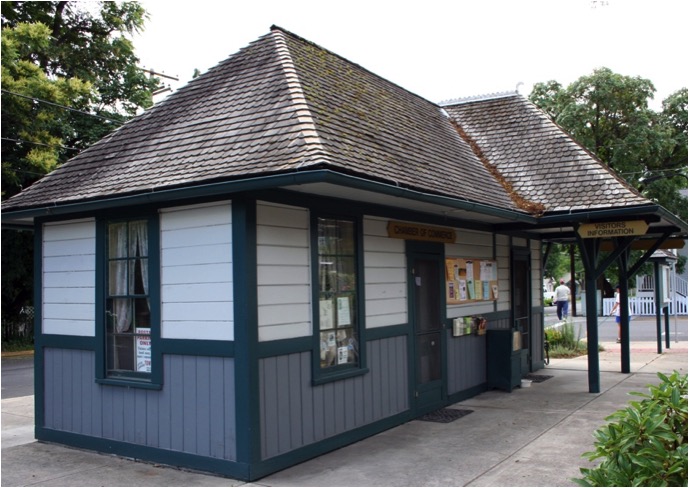 Photo Source: Carolyn Kingsnorth Photo Source: Carolyn Kingsnorth
The building has been turned 90 degrees from its original orientation, when the broad overhang faced North Oregon Street. Built in 1891, the depot was surveyed in January of that year, the survey noting it as being near W.J. Plymale’s stables on the northwest corner of Oregon and C Streets. Its builder and architect are unknown.
At an earlier stop on our tour we talked about the railroad’s choosing to run through the flat valley floor rather than through, or even to, Jacksonville, eventually spelling the end of Jacksonville as the county seat and largest town in Southern Oregon. This depot represents Jacksonville’s effort to hang on to its prominence in the valley.
Once the Oregon and California Railroad decided to run its line through the valley floor, creating the town of Middleford (now Medford), folks in Jacksonville, and eventually even Medford, searched for a method to locate a right-of-way between the two towns. While Jacksonville had no freight to speak of by the late 1880’s, the creation of such a line would bring jobs for construction and operation. By 1890, the Medford and Jacksonville Railway was incorporated under the ownership of Honeyman, DeHart & Co., a hardware firm in Portland. After at least one change in contractor, the first train rolled into Jacksonville in January of 1891, before the depot had even been finished. Indeed, the train itself had been borrowed from the Union Pacific.
According to Jacksonville’s Town Historian, Larry Smith, town residents had turned out to greet the train. “They all jumped on and paid their fare and went roaring back into Medford. But there was no return trip that day. All these people on board the car had to walk back to Jacksonville!”
In February of 1891, the railroad contractor formed the Rogue River Valley Railway Company. The intent was to haul gravel, bricks, timber, crops, livestock, mail and passengers over the 5-mile, single track spur line that now connected Jacksonville with Medford. Scheduled service began February 12, 1891. In Mayof that year, the RRVR’s first engine, a brand new Porter locomotive, was put into service.
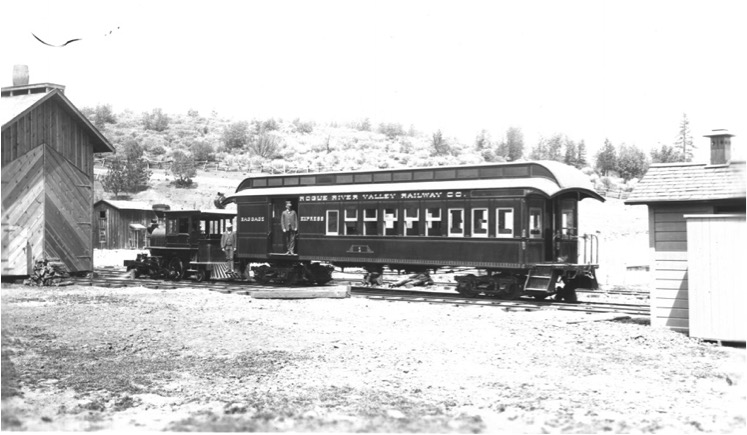 Early RRVR Train Pulled by Engine No. 1. Photo Source: SOHS #1559 Early RRVR Train Pulled by Engine No. 1. Photo Source: SOHS #1559
Engine No. 1 was a small ten-ton locomotive that was dwarfed by its passenger car and had trouble making the trip between the two towns. Nicknamed Dinky, the Peanut Roaster, the Tea Kettle, and the Jacksonville Cannon Ball because of its small size, Engine No. 1 soon proved too underpowered to haul the heavier freight loads up the 3% grade from Medford. A year later it was relegated to hauling a single Pullman car. Even then it could have trouble making the grade, especially when mischievous boys saw fit to soft soap the tracks!
In 1895 it was replaced by 20-ton Engine No. 2.
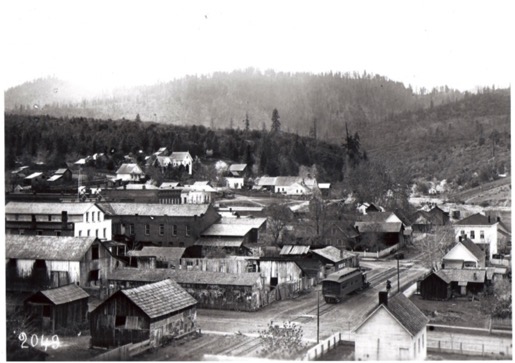 Engine No. 1 with passenger car, C Street track, Engine No. 1 with passenger car, C Street track,
taken from Jacksonville Historic Courthouse. Photo Source: SOHS.
At some point the operating railroad was leased to Medford resident William S. Barnum. The few employees the Rogue River Valley Railway had were let go so that Barnum could make the operation a family affair. Barnum’s thirteen-year-old son John was billed as the “youngest conductor in the nation.” Although Barnum let the lease go after a short time, he and his family were involved in operations throughout the life of the railway.
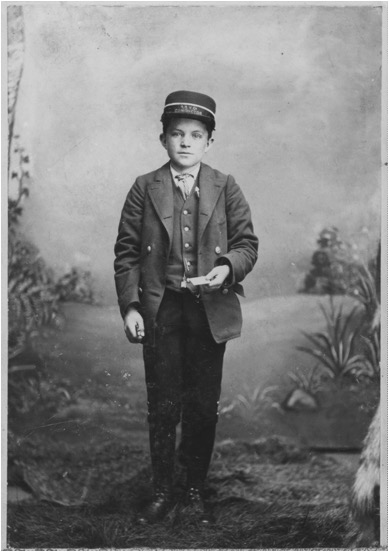 John Corbin Barnum, the “nation’s John Corbin Barnum, the “nation’s
youngest conductor,” in uniform.
SOHS #10216. |
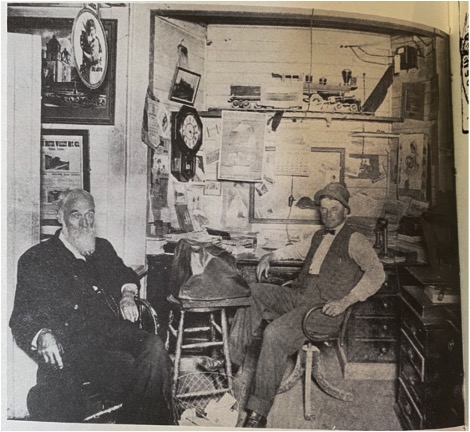 W.S. Barnum, left, and John Corbin Barnum, all grown up, in the Jacksonville Depot in 1913. Photograph originally courtesy of Dr. William Barnum of Medford. SOHS #1547. W.S. Barnum, left, and John Corbin Barnum, all grown up, in the Jacksonville Depot in 1913. Photograph originally courtesy of Dr. William Barnum of Medford. SOHS #1547. |
Eventually the line was able to buy larger, stronger locomotives.
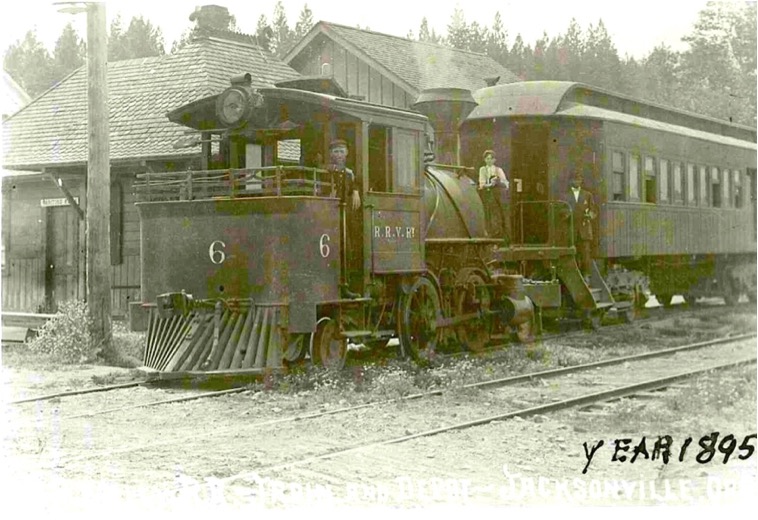 Locomotive No. 6, showing William S. Barnum in the cab. Photo credit: SOHS. Locomotive No. 6, showing William S. Barnum in the cab. Photo credit: SOHS.
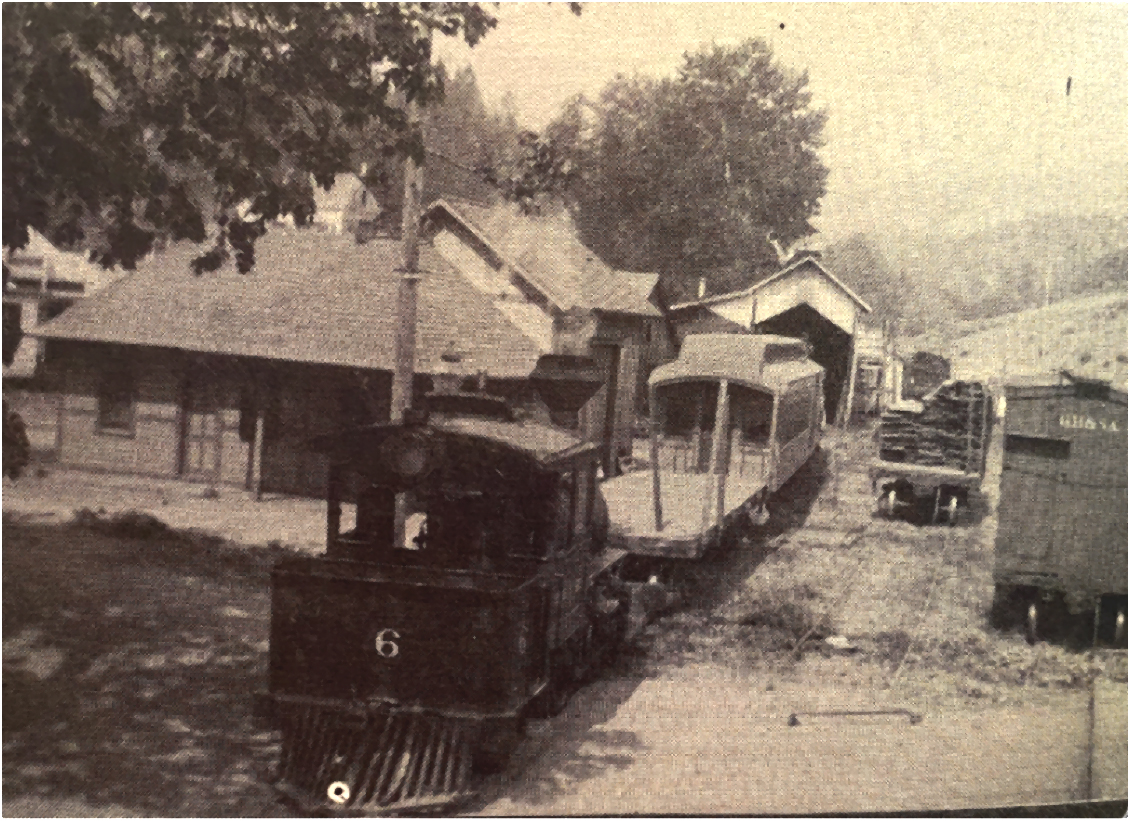 Locomotive No 6 in front of the Jacksonville Depot, heading a combination of flatcar and passenger cars. Locomotive No 6 in front of the Jacksonville Depot, heading a combination of flatcar and passenger cars.
This photo shows the three tracks that were originally alongside the depot, as well as other buildings, now gone.
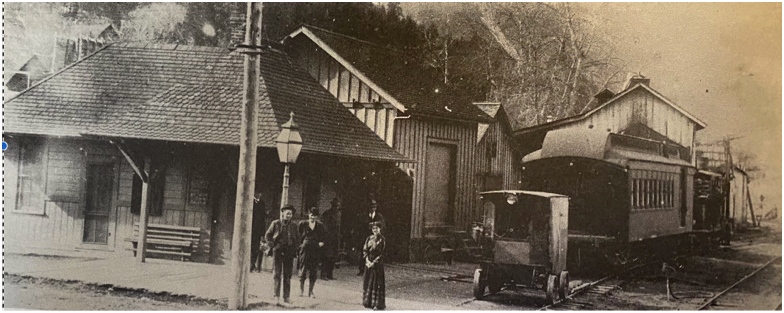 Jacksonville Depot, 1908. Jacksonville Depot, 1908.
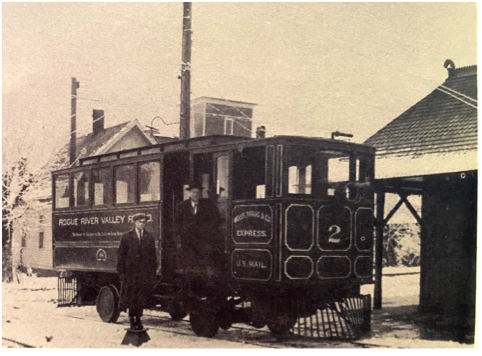 Rail Gasoline Car outside Jacksonville Depot. Rail Gasoline Car outside Jacksonville Depot.
William Henry Barnum is on the step. |
By 1900, the line was owned by William S. Barnum but by then, automobiles had arrived, and passenger traffic was slight. In 1909, his son, William Henry Barnum, designed a Rail Gasoline Car which was built to his specifications in San Francisco, for the purpose of improving service and lowering costs for the line.
Alas, the line continued to lose money, and was sold to Southern Oregon Traction Company in 1915 partly for cash, and partly for a mortgage to be held by Barnum.
During World War I, the Rogue River Valley Railway performed another service—that of school bus. Jacksonville students attended Medford High School and the train tracks ran right by the school, located on the current site of the Jackson County Courthouse. Students could catch the train to school for only five cents a ride.
However, the Southern Oregon Traction Company found operation difficult under World War I conditions. They also had not succeeded in recovering the costs they expended to electrify their lines. The railway reverted to Barnum, but one year later Barnum again sold the line (while holding a mortgage) to J.T. Gagnon. Thanks to the mortgage, Barnum ended up with the railway line by 1924 when Gagnon defaulted. While Barnum continued to use the line occasionally for freight, he petitioned the state for a permit to stop operations and salvage what scrap he could from the track. By this time, there was a hard surface, all weather road between Medford and Jacksonville. People preferred to drive their automobiles, and thus there was little or no call for even an electrified train or trolley between the two towns.
The tracks between Jacksonville city limits and Medford city limits was taken up and likely sold as scrap metal although the right-of-way still remains and portions of it have been converted to a “Rails-to-Trails” hiking path. Some rails still exist within Jacksonville and can be seen on C Street in front of the depot, and between the depot and the Historic Courthouse.
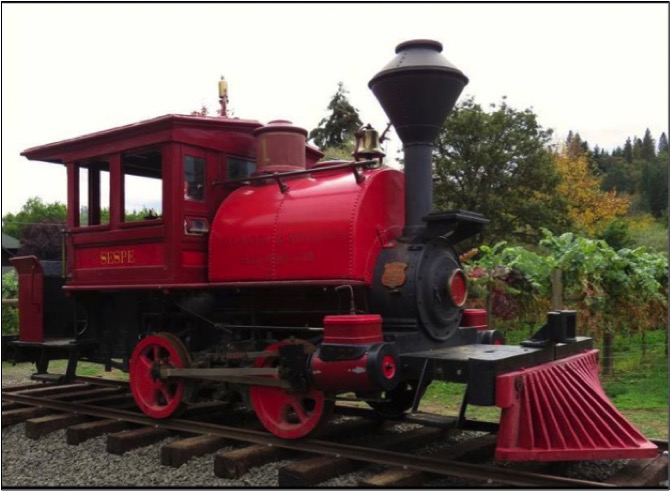 Photo Credit: Historic Jacksonville, Inc. Photo Credit: Historic Jacksonville, Inc. |
And the little original Porter Locomotive No. 1? After it was sold in 1895, the little 12-ton engine changed hands a number of times over the years until it was badly burned in a logging camp fire.
In 1946, Helen O’Connor spotted the abandoned engine in Cottage Grove, OR, and bought it for her husband Chadwell, a steam engine enthusiast, inventor, and a Sci-Tech award and Oscar recipient from the Academy of Motion Picture Arts and Sciences.
The couple had Engine No. 1 rebuilt from the original Porter blueprints. Over the next six decades, the little engine saw new life as a private plaything, a Cottage Grove tourist promotion, transportation for families wanting to cut their own Christmas trees, and a “prop” in commercials and motion pictures.
In 2014, Mel and Brooke Ashland arranged for its purchase and restoration. Engine No. 1 now sits on original track on the Bigham Knoll Campus at the end of East E Street in Jacksonville.
Sources Cited
Webber, Bert, and Margie Webber. Single-Track to Jacksonville: The Rogue River Valley Railway and the Southern Oregon Traction Company: an Oregon Documentary.Webb Research Group, 1990. Any uncredited photographs are from this book.
Lewis, Raymond. “The Jacksonville Cannonball.” The Table Rock Sentinel, Mar. 1986, pp. 16–30.
Evans, Gail E.H. State of Oregon Inventory of Historic Properties, “Rogue River Valley Railway Depot/Jacksonville Chamber of Commerce,” November, 1979.
Kingsnorth, Carolyn. “Engine #1.” Historic Jacksonville, Inc., www.historicjacksonville.org/engine-1/.
Jacksonville Heritage Society, www.jvilleheritage.org/.
|